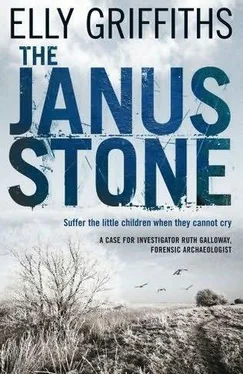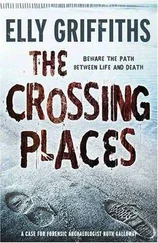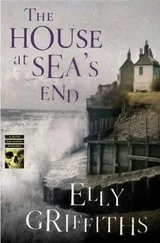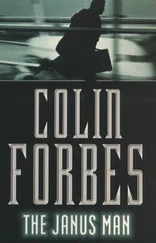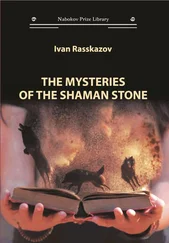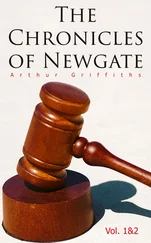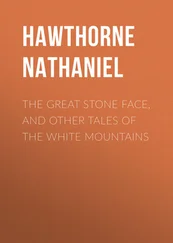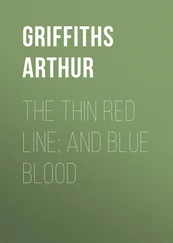
Elly Griffiths
The Janus Stone
The second book in the Ruth Galloway Mystery series, 2010
For my nieces and nephews: Francesca, William, Robert, Charlotte and Eleanor
1st June, Festival of Carna
The house is waiting. It knows. When I sacrificed yesterday, the entrails were black. Everything is turned to night. Outside it is spring but in the house there is a coldness, a pall of despair that covers everything.
We are cursed. This is no longer a house but a grave. The birds do not sing in the garden and even the sun does not dare penetrate the windows. No one knows how to lift the curse. They have given in and lie as if waiting for death. But I know and the house knows.
Only blood will save us now.
A light breeze runs through the long grass at the top of the hill. Close up, the land looks ordinary, just heather and coarse pasture with the occasional white stone standing out like a signpost. But if you were to fly up above these unremarkable hills you would be able to see circular raised banks and darker rectangles amongst the greens and browns – sure signs that this land has been occupied many, many times before.
Ruth Galloway, walking rather slowly up the hill, does not need the eagle’s eye view to know that this is an archaeological site of some importance. Colleagues from the university have been digging on this hill for days and they have uncovered not only evidence of a Roman villa but also of earlier Bronze Age and Iron Age settlements.
Ruth had planned to visit the site earlier but she has been busy marking papers and preparing for the end of term. It is May and the air is sweet, full of pollen and the scent of rain. She stops, getting her breath back and enjoying the feeling of being outdoors on a spring afternoon. The year has been dark so far, though not without unexpected bonuses, and she relishes the chance just to stand still, letting the sun beat down on her face.
‘Ruth!’ She turns and sees a man walking towards her. He is wearing jeans and a work-stained shirt and he treats the hill with disdain, hardly altering his long stride. He is tall and slim with curly dark hair greying at the temples. Ruth recognises him, as he obviously does her, from a talk he gave at her university several months ago. Dr Max Grey, from the University of Sussex, an archaeologist and an expert on Roman Britain.
‘I’m glad you could come,’ he says and he actually does look glad. A change from most archaeologists, who resent another expert on their patch. And Ruth is an acknowledged expert – on bones, decomposition and death. She is Head of Forensic Archaeology at the University of North Norfolk.
‘Are you down to the foundations?’ asks Ruth, following Max to the summit of the hill. It is colder here and, somewhere high above, a skylark sings.
‘Yes, I think so,’ says Max, pointing to a neat trench in front of them. Halfway down, a line of grey stone can be seen. ‘I think we may have found something that will interest you, actually.’
Ruth knows without being told.
‘Bones,’ she says.
Detective Chief Inspector Harry Nelson is shouting. Despite a notoriously short fuse at work (at home with his wife and daughters he is a pussy cat) he is not normally a shouter. Brusque commands are more his line, usually delivered on the run whilst moving on to the next job. He is a man of quick decisions and limited patience. He likes doing things: catching criminals, interrogating suspects, driving too fast and eating too much. He does not like meetings, pointless discussions or listening to advice. Above all, he does not like sitting in his office on a fine spring day trying to persuade his new computer to communicate with him. Hence the shouting.
‘Leah!’ he bellows.
Leah, Nelson’s admin assistant (or secretary, as he likes to call her), edges cautiously into the room. She is a delicate, dark girl of twenty-five, much admired by the younger officers. Nelson, though, sees her mainly as a source of coffee and an interpreter of new technology, which seems to get newer and more temperamental every day.
‘Leah,’ he complains, ‘the screen’s gone blank again.’
‘Did you switch it off?’ asks Leah. Nelson has been known to pull out plugs in moments of frustration, once fusing all the lights on the second floor.
‘No. Well, once or twice.’
Leah dives beneath the desk to check the connections. ‘Seems OK,’ she says. ‘Press a key.’
‘Which one?’
‘Surprise me.’
Nelson thumps the space bar and the computer miraculously comes to life, saying smugly, ‘Good afternoon, DCI Nelson.’
‘Fuck off,’ responds Nelson, reaching for the mouse.
‘I beg your pardon?’ Leah’s eyebrows rise.
‘Not you,’ says Nelson, ‘This thing. When I want small talk, I’ll ask for it.’
‘I assume it’s programmed to say good morning,’ says Leah equably. ‘Mine plays me a tune.’
‘Jesus wept.’
‘Chief Superintendent Whitcliffe says everyone’s got to familiarise themselves with the new computers. There’s a training session at four today.’
‘I’m busy,’ says Nelson without looking up. ‘Got a case conference out Swaffham way.’
‘Isn’t that where they’re doing that Roman dig?’ asks Leah.
‘I saw it on Time Team .’
She has her back to Nelson, straightening files on his shelves, and so fails to see the sudden expression of interest on his face.
‘A dig? Archaeology?’
‘Yes,’ says Leah, turning round. ‘They’ve found a whole Roman town there, they think.’
Nelson now bends his head to his computer screen. ‘Lots of archaeologists there, are there?’
‘Yes. My uncle owns the local pub, the Phoenix, and he says they’re in there every night. He’s had to double his cider order.’
‘Typical,’ grunts Nelson. He can just imagine archaeologists drinking cider when everyone knows that bitter’s a man’s drink. Women archaeologists, though, are another matter.
‘I might have a look at the site on my way back,’ he says.
‘Are you interested in history?’ asks Leah disbelievingly.
‘Me? Yes, fascinated. Never miss an episode of Sharpe .’
‘You should be on our pub quiz team then.’
‘I get too nervous,’ says Nelson blandly, typing in his password with one finger. Nelson1; he’s not one for ambiguity. ‘Do me a favour, love, make us a cup of coffee would you?’
Swaffham is a picturesque market town, the kind Nelson drives through every day without noticing. A few miles outside and you are deep in the country – fields waist high with grass, signposts pointing in both directions at once, cows wandering across the road shepherded by a vacant-looking boy on a quad bike. Nelson is lost in seconds and almost gives up before it occurs to him to ask the vacant youth the way to the Phoenix pub. When in doubt in Norfolk, ask the way to a pub. It turns out to be quite near so Nelson does a U-turn in the mud, turns into a road that is no more than a track and there it is, a low thatched building facing a high, grassy bank. Nelson parks in the pub car park and, with a heart turn that he does not want to acknowledge as excitement, he recognises the battered red Renault parked across the road, at the foot of the hill. I just haven’t seen her for a while, he tells himself, it’ll be good to catch up.
He has no idea where to find the dig, or even what it will look like, but he reckons he’ll be able to see more from the top of the bank. It’s a beautiful evening, the shadows are long on the grass and the air is soft. But Nelson does not notice his surroundings; he is thinking of a bleak coastline, of bodies washed out to sea by a relentless tide, of the circumstances in which he met Ruth Galloway. She had been the forensic archaeologist called in when human bones were found on the Saltmarsh, a desolate spot on the North Norfolk coast. Though those bones had turned out to be over two thousand years old, Ruth had subsequently become involved in a much more recent case, that of a five-year-old girl, abducted, believed murdered. He hasn’t seen Ruth since the case ended three months ago.
Читать дальше
